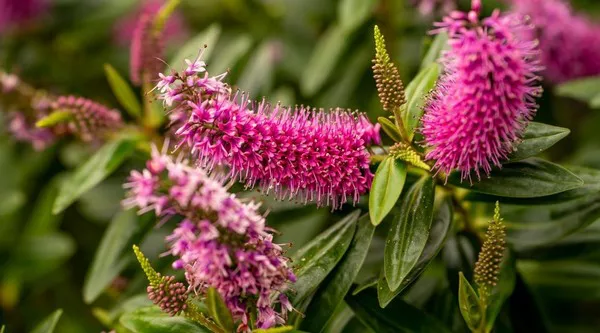Parsley is a versatile and flavorful herb that adds depth to a wide range of dishes. However, like any other garden plant, parsley is susceptible to pests that can damage or even destroy your crop if left unchecked. To maintain a healthy and bountiful parsley harvest, it’s essential to learn how to protect your parsley from pests.
Understanding Common Parsley Pests
Before delving into pest prevention methods, it’s crucial to familiarize yourself with the most common pests that can plague your parsley plants. Some of the key parsley pests include aphids, caterpillars, whiteflies, slugs, snails, and spider mites. Each of these pests can cause different types of damage to your parsley, from nibbling on the leaves to spreading diseases.
Promoting Healthy Soil and Parsley Plants
A vital first step in pest management is to create conditions that favor healthy parsley growth. Start by ensuring your parsley plants are growing in well-draining soil that is rich in organic matter. Healthy, robust plants are less likely to attract pests and are better equipped to withstand pest damage.
Companion Planting for Pest Control
Companion planting is an effective strategy for keeping pests away from your parsley. Some plants act as natural pest repellents when grown alongside parsley. For example, planting basil, marigolds, or nasturtiums near your parsley can help deter pests like aphids and caterpillars. These companion plants emit natural compounds that repel pests or attract beneficial insects that prey on them.
Regular Inspection and Pest Identification
Vigilance is key to managing pests in your parsley garden. Make it a habit to inspect your parsley plants regularly, especially the undersides of leaves where many pests hide. Early detection and identification of pests are crucial for effective control. Keep an eye out for any signs of infestation, such as chewed leaves, yellowing foliage, or visible pests.
Natural Pest Remedies
Several natural remedies can help control parsley pests without resorting to chemical pesticides. Some options include:
a. Neem oil: Neem oil is a natural pesticide that can deter and kill a variety of parsley pests. Mix it with water and a few drops of liquid soap and apply it to your plants as needed.
b. Garlic and chili pepper spray: Create a homemade spray by blending garlic and chili peppers with water. Strain the mixture and use it as a repellent for common parsley pests.
c. Beneficial insects: Introduce beneficial insects like ladybugs, lacewings, and parasitic wasps into your garden. These insects can help keep pest populations in check by preying on them.
d. Diatomaceous earth: Sprinkle food-grade diatomaceous earth around your parsley plants. It is a natural substance that can deter crawling pests like slugs and snails.
Organic Pest Control Products
If natural remedies are not sufficient to control severe pest infestations, consider using organic pest control products. These products are less harmful to the environment and beneficial insects while effectively managing pests. Examples include insecticidal soaps and organic neem-based pesticides.
Proper Watering and Drainage
Parsley prefers evenly moist soil but can be susceptible to certain pests, like slugs and snails, if the soil is consistently damp. Water your parsley plants at the base rather than overhead to prevent excessive moisture on the leaves. Additionally, ensure proper soil drainage to reduce the risk of root rot, which can attract other pests.
Crop Rotation
Practicing crop rotation is a preventive measure that helps reduce the buildup of pests in your parsley garden. Avoid planting parsley in the same location year after year. Instead, rotate it with other non-related crops to disrupt the pest life cycle and reduce the likelihood of infestations.
Pest Barriers
Physical barriers can be effective in protecting your parsley from certain pests. Consider using row covers or mesh netting to prevent flying insects like whiteflies and aphids from reaching your plants. This is especially useful in areas with a high pest population.
Regular Pruning and Maintenance
Regularly prune your parsley to remove damaged or infected leaves, as these can attract pests. Pruning also encourages healthy growth and helps improve air circulation around the plants, reducing the risk of fungal diseases.
Monitoring and Record-Keeping
Keep a gardening journal to record your pest management efforts. Note the types of pests you encounter, the methods you use to control them, and their effectiveness. This information will help you refine your pest management strategies in subsequent seasons.
Beneficial Wildlife
Attracting beneficial wildlife to your garden can help control pests naturally. Birds, frogs, and toads are natural predators of many garden pests. Provide habitat and food sources to encourage these creatures to take up residence in your garden.
Conclusion
Protecting your parsley from pests requires a combination of preventive measures and active management. By understanding the common pests that affect parsley, promoting healthy plant growth, and employing natural remedies and organic products, you can ensure a thriving parsley garden. Regular monitoring and record-keeping will help you fine-tune your pest control efforts over time, leading to a bountiful parsley harvest and a pest-free garden. With dedication and care, you can enjoy the rich flavors of homegrown parsley in your culinary creations while keeping pesky pests at bay.


